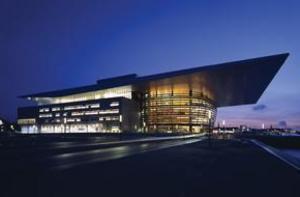In the introduction to Made of Light: The Art of Light and Architecture, one of the co-authors, Anthony Tischhauser, claims the book is ‘neither a primer, nor a polemic' in the field of lighting design.
In the opinion of this reader, however, it is both these things and none the worse for it, writes Ben Addy of Moxon Architects.
The book is a clearly presented but eclectic catalogue of works of art and architecture cut with essays on the science of light, as well as very personal responses by non-designers (actors, pilots, dentists… ) on their understanding of light as related to their own fields. These essays in particular are a very refreshing aspect of this book - they deal with both science and personal experience alongside more conventional design territory. This provides for an unusual combination, which at first gives an impression of a lack of structure. In fact this non-linearity is one of the book's strengths - the text, though sometimes necessarily brief (the primer aspect), is very good, and the extraordinary range of material on offer makes for a very enjoyable exploration that betrays the origin of much of the material in the exhibition of the same name that showed at the RIBA in 2004.
Interspersed into this rich mix are examples of contemporary lighting design itself - often collaborations between lighting designers and artists/architects, such as the seminal work by Claude Engle and Karou Mende with Toyo Ito on the ‘Tower of Winds'.
The most arresting are collaborations between Speirs and Major themselves, and architects such as Wilkinson Eyre and Grimshaw. These ‘monograph pieces', with single images on double pages, are powerful advertisements for the collaborative process - lighting design is intrinsic both to the dream-like quality of Bath Spa, and the sheer knockout punch of Gateshead Millennium Bridge.
For an indication of where the field might hopefully head, the piece on the extraordinary ‘Bridge of Aspirations' in Floral Street in central London might provide a clue.
The lighting elements themselves have been conceived by Speirs and Major as solid bars of light that are part of the enclosure of the bridge - there are no visible bulbs/lenses etc, and when the lights are off, they are invisible. This ‘solid light' suggests designers are able to operate not only on the level of practicality or effect, but also on that of form, which is very interesting indeed.
Source
ÐÇ¿Õ´«Ã½ Sustainable Design
Postscript
Made of Light: The Art of Light and Architecture is by Mark Major, Jonathan Speirs and Anthony Tischhauser.


















No comments yet